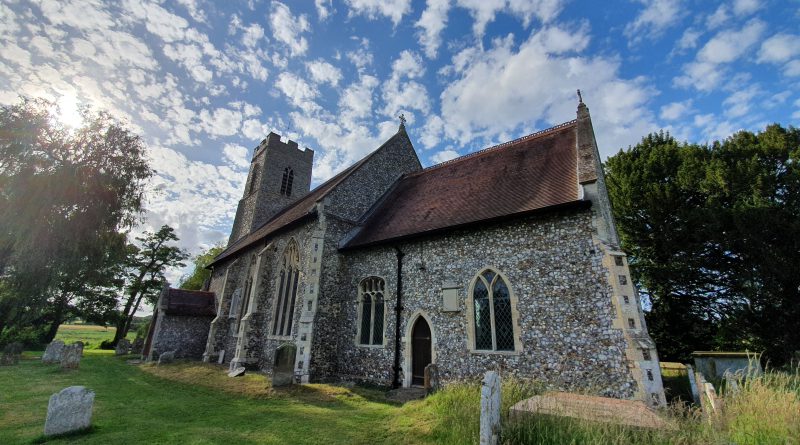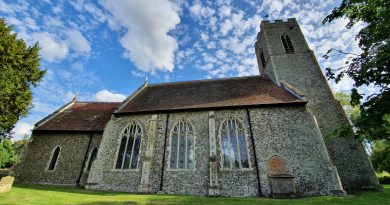Lamas – St. Andrew’s Church
Although there was a previous church on this site from the Anglo-Saxon period, the current nave mostly dates to the fifteenth century and until relatively recently, the church would have been thatched. What is noticeable is that the chancel is at an angle to the nave, which the listed building record explains is known as a weeping chancel. The chancel was rebuilt in the 1880s (there’s a plan from 1887 here), using stone from the former chancel, likely on the foundations of the old structure.
Ian Hinton, from the UEA although he doesn’t specifically mention Lamas, wrote a document about weeping chances and there seems to be no single reason as to why they were constructed like that. It doesn’t seem that anyone knows why the chancel here is built like this, although Hinton gives plenty of suggestions as to why churches were once constructed in this manner.
The church tower, which was partly rebuilt in the 1880s.
The lean is also visible from the north side, with one of the doors bricked up. Incidentally, this church is sited in a rather tranquil location and it is also located by the peacefully flowing river.
This is a scratch dial, or a mass dial, and since the one at Ingham Church was explained to me by a guide, I’ve started to notice more of them. They are used as a sundial for canonical hours and there would have been a peg in the hole which would have cast a shadow. Having written that though, this one looks quite new and so is probably from the late nineteenth-century renovation.
I thought that this was quite a graceful tree in the churchyard.
Always sad to see stones broken, but at least they haven’t been turned into paving slabs.
The south porch which was renovated in 1977 for the Queen’s Silver Jubilee which the listed building record notes has a coffin lid step.
Sadly, I suspect that the readable element on this stone won’t last much longer.











